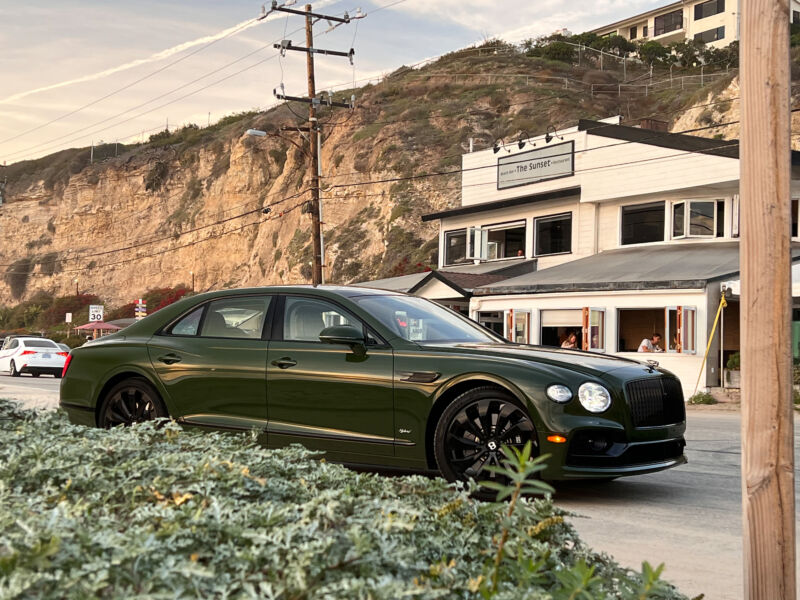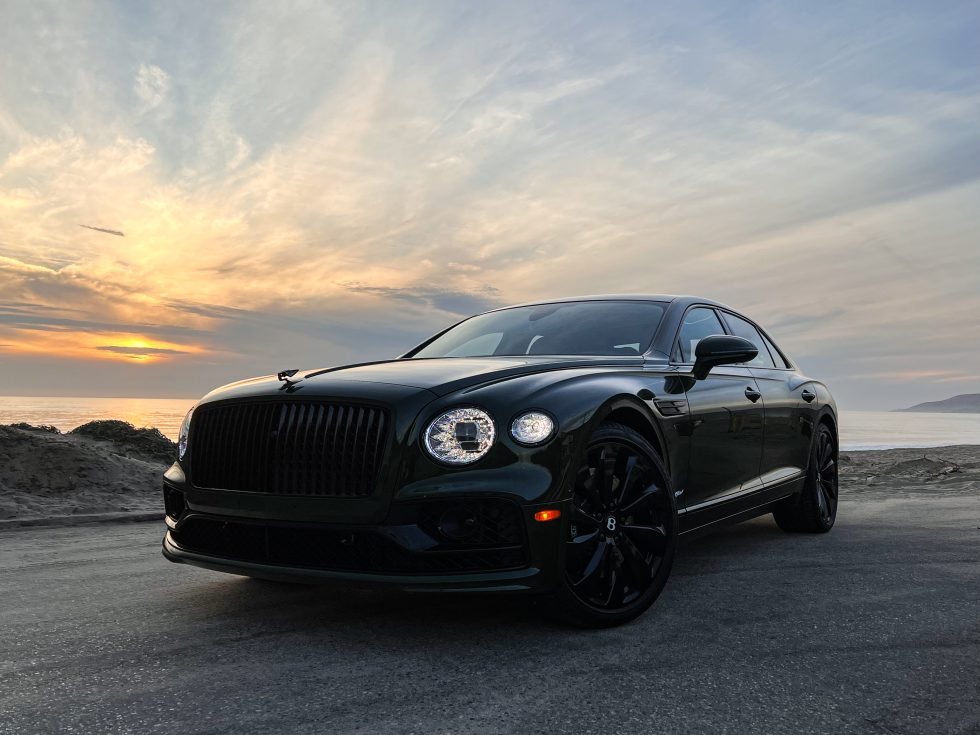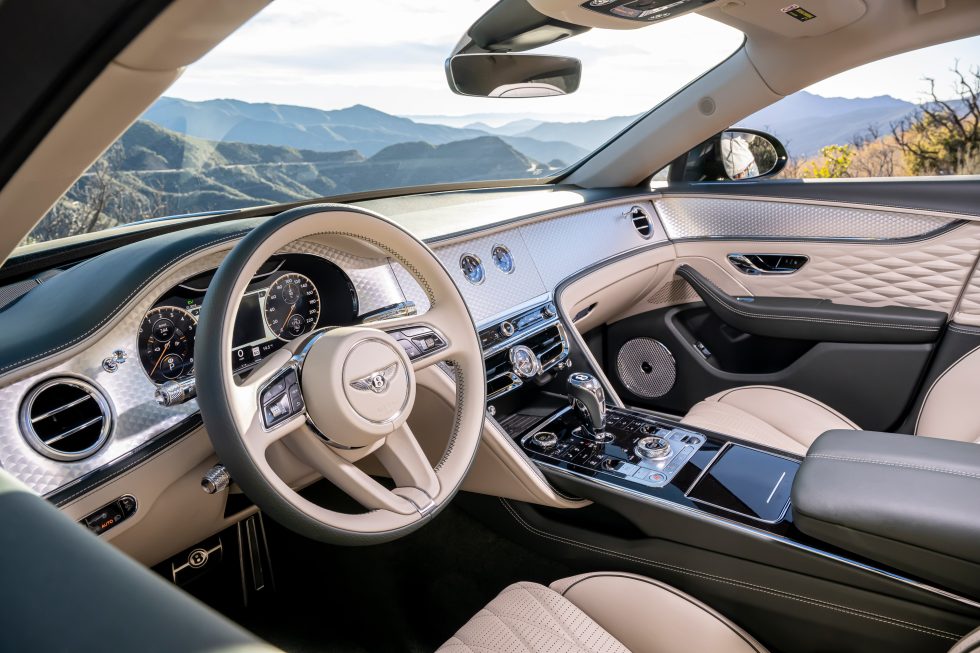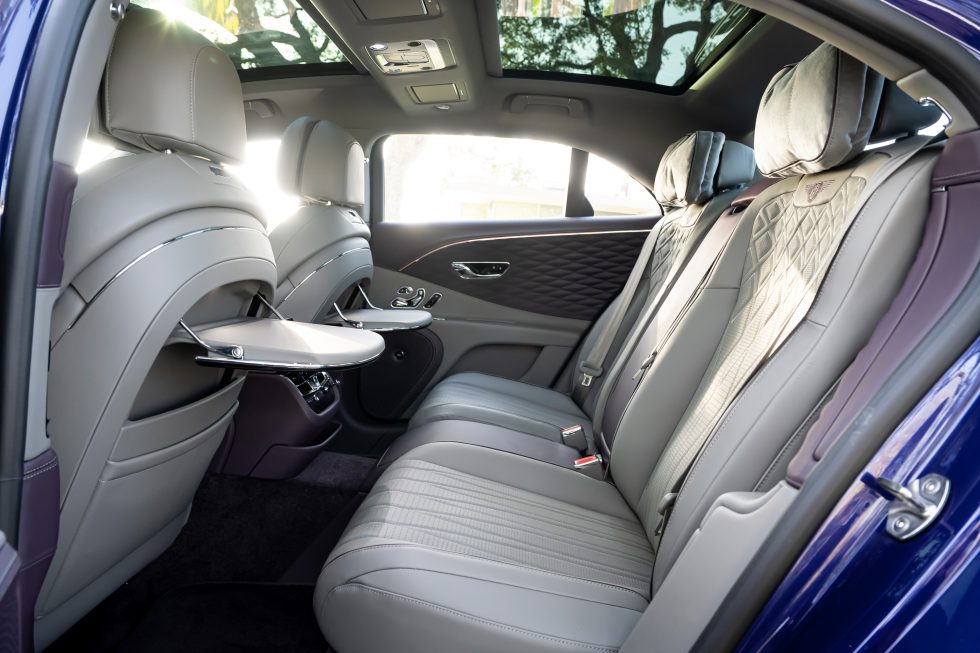
Jonathan Gitlin
Over the last few years, I’ve been fortunate enough to drive many different vehicles, and one thing has become abundantly clear: electric motors make cars better. They’re highly efficient, and they can recapture energy that would otherwise be wasted under braking. They make massive amounts of torque almost instantly and respond in a fraction of the time it takes an internal combustion engine to take a deep breath. And they do all that in near-silence, which makes them ideally suited to applications in luxury cars.
And cars don’t get much more luxurious than Bentley’s new Flying Spur Hybrid.

Jonathan Gitlin
This new plug-in hybrid is Bentley’s second PHEV and follows the hybrid version of its Bentayga SUV ahead of the introduction of the brand’s first battery EV in 2025. As in the SUV, a 2.9L V6 gasoline engine sits under the expansive hood, generating 410 hp (306 kW) and 406 lb-ft (550 Nm).
That engine shares the job of propelling the Flying Spur Hybrid with a 134 hp (100 kW), 295 lb-ft (400 Nm) electric motor, and both engine and motor use the same eight-speed dual-clutch transmission, driving all four wheels. (The Flying Spur Hybrid shares a platform with Porsche’s Panamera sedan and hence uses the same DCT transmission rather than the eight-speed torque converter automatic used by the Bentayga Hybrid.)

Bentley
That’s all mostly hidden from view, though, and wrapped up in a relatively aero-efficient body. The vehicle needs that streamlined 0.3 drag coefficient, as there’s no getting around the fact that the Flying Spur Hybrid is a big car—209 inches (5,316 mm) long, 78 inches (1,978 mm) wide (minus the mirrors), 58 inches (1,483 mm) tall, and with a 125-inch (3,194 mm) wheelbase.
At around 5,500 lbs (2,450 kg), it’s no featherweight, either. But nor should we expect it to be, as it’s laden with thick carpeting, acres of leather, and seats that move, heat, cool, and massage both front and rear occupants. Plus, there’s an 18 kWh (useable: 14.1 kWh) lithium-ion battery pack. The curb weight could be a lot higher, however; Bentley has made use of aluminum where it can, including laser-cut superformed parts like the large rear body side panel.

Bentley
As you might expect of a car wearing the winged B, the inside is quite opulent. Exactly how opulent depends on the buyer, particularly if Mulliner (Bentley’s coachbuilding department) gets involved. The 3D quilted leather on the door panels is an interesting touch, and I adore the engine-turned aluminum veneer fitted to our British Racing Green test car. Having the infotainment screen rotate out of view is a particularly nice touch, albeit one that costs $6,490. The seat massagers are up there with the best of them, too.
The long wheelbase means there’s plenty of room in the back for those who prefer to be driven, but you might notice that the relatively high belt line, and the low h-point for the rear seats, contribute to rather small side windows from which to regard the passing world.
